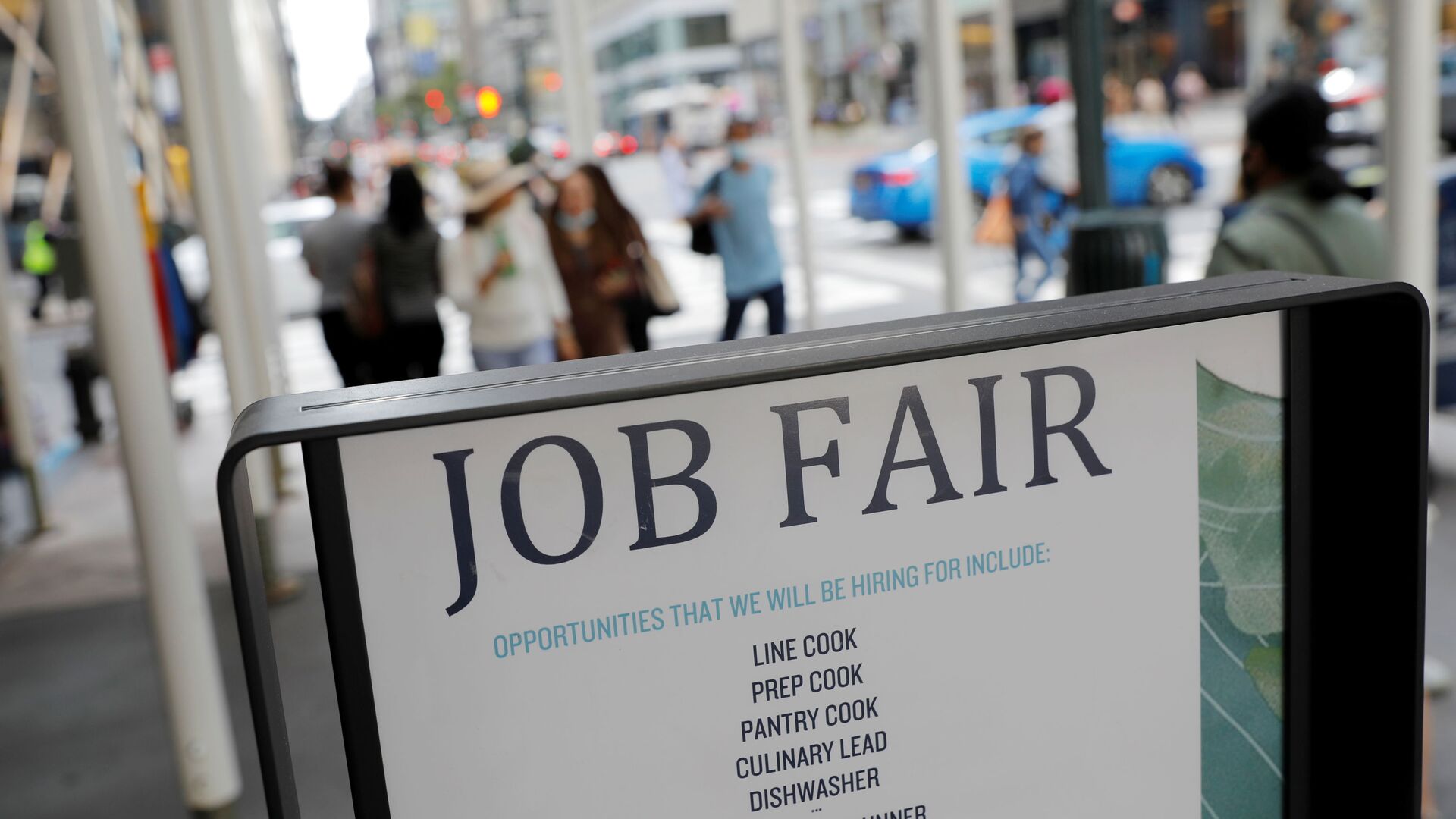https://sputnikglobe.com/20210927/delta-variant-may-yet-worsen-to-slow-americas-return-to-work-feds-reserve-governor-says-1089459550.html
Delta Variant May Yet Worsen to Slow America’s Return to Work, Fed’s Reserve Governor Says
Delta Variant May Yet Worsen to Slow America’s Return to Work, Fed’s Reserve Governor Says
Sputnik International
WASHINGTON (Sputnik) - The impact of COVID-19’s Delta variant on the US workforce may worsen in the coming months to significantly slow employers’ targets of... 27.09.2021, Sputnik International
2021-09-27T18:58+0000
2021-09-27T18:58+0000
2021-09-27T19:00+0000
newsfeed
america
jobs
unemployment
coronavirus
https://cdn1.img.sputnikglobe.com/img/07e5/09/03/1083792841_0:320:3072:2048_1920x0_80_0_0_f91755c95be0556c8ca165e294866b29.jpg
“While I am hopeful for improvements in the September employment report with the return to in-person education, the effects of Delta have likely prolonged caregiving constraints,” said in a speech prepared for delivery at a business conference in Arlington, Virginia.To illustrate her point, Brainard said there were 2,000 school closures for COVID-19 across nearly 470 school districts in 39 of the 50 US states.With record-high job openings and an unemployment rate just above 5%, the headline vacancy-to-unemployed ratio has risen above 1 vacancy per job seeker and was now at pre-pandemic levels, Brainard said.“Some cite this ratio of job openings to job seekers as indicating we are close to full employment,” she said. “But virus conditions may be driving an important wedge between labor supply in the near term relative to the medium term.”More than a year into the COVID-19 crisis, restoring job growth remains one of the main concerns of US policymakers.The United States lost more than 21 million jobs between March and April 2020, at the height of business lockdowns forced by the coronavirus. More than 7 million of those jobs have yet to return, officials say.The US economy itself shrank 3.5% in 2020. This year though, growth has been quite dynamic, with a 6.5% rebound for the second quarter though that was still below the 8.5% expected by economists.The Fed thinks growth will average at 6.5% for all of 2021. But Chairman Powell also says it may take a while for “full employment” — defined by a monthly unemployment rate of 4% or lower — to occur. The monthly unemployment rate stood at 5.2% in August.
Sputnik International
feedback@sputniknews.com
+74956456601
MIA „Rossiya Segodnya“
2021
Sputnik International
feedback@sputniknews.com
+74956456601
MIA „Rossiya Segodnya“
News
en_EN
Sputnik International
feedback@sputniknews.com
+74956456601
MIA „Rossiya Segodnya“
Sputnik International
feedback@sputniknews.com
+74956456601
MIA „Rossiya Segodnya“
newsfeed, america, jobs, unemployment, coronavirus
newsfeed, america, jobs, unemployment, coronavirus
Delta Variant May Yet Worsen to Slow America’s Return to Work, Fed’s Reserve Governor Says
18:58 GMT 27.09.2021 (Updated: 19:00 GMT 27.09.2021) WASHINGTON (Sputnik) - The impact of COVID-19’s Delta variant on the US workforce may worsen in the coming months to significantly slow employers’ targets of bringing staff back to their site or office, Federal Reserve Governor Lael Brainard said Monday.
“While I am hopeful for improvements in the September employment report with the return to in-person education, the effects of Delta have likely prolonged caregiving constraints,” said in a speech prepared for delivery at a business conference in Arlington, Virginia.
To illustrate her point, Brainard said there were 2,000 school closures for COVID-19 across nearly 470 school districts in 39 of the 50 US states.
“While the disruptions last just under six days on average, the possibility of further unpredictable disruptions could cause some parents to delay their plans to return to the labour force. Similarly, COVID-related challenges have reduced the availability of daycare, preschool, and after-school care, further complicating parental return-to-work decisions.”
With record-high job openings and an unemployment rate just above 5%, the headline vacancy-to-unemployed ratio has risen above 1 vacancy per job seeker and was now at pre-pandemic levels, Brainard said.
“Some cite this ratio of job openings to job seekers as indicating we are close to full employment,” she said. “But virus conditions may be driving an important wedge between labor supply in the near term relative to the medium term.”
More than a year into the
COVID-19 crisis, restoring job growth remains one of the main concerns of US policymakers.
The United States lost more than 21 million jobs between March and April 2020, at the height of business lockdowns forced by the coronavirus. More than 7 million of those jobs have yet to return, officials say.
The US economy itself shrank 3.5% in 2020. This year though, growth has been quite dynamic, with a 6.5% rebound for the second quarter though that was still below the 8.5% expected by economists.
The Fed thinks growth will average at 6.5% for all of 2021. But Chairman Powell also says it may take a while for “full employment” — defined by a monthly unemployment rate of 4% or lower — to occur. The monthly unemployment rate stood at 5.2% in August.

